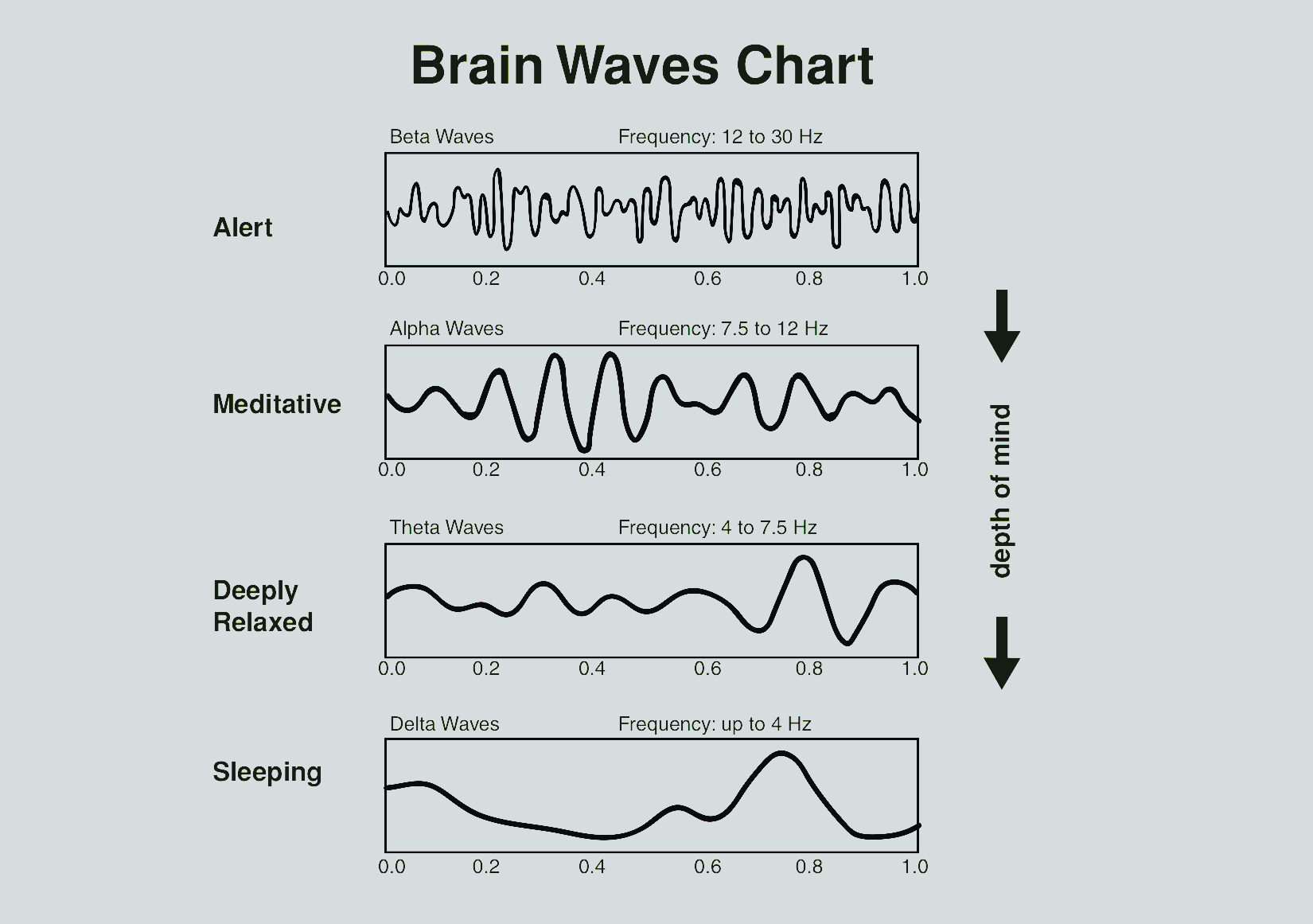When we are children our predominant brainwave frequencies fall into the theta range (4—7 Hz). These are slower frequencies than we experience as adults so we rarely hear young children complaining of over-thinking or a busy mind!
Theta is the brain-state we experience at night before sleep when we are relaxed and drowsy; or that state in the morning just after opening our eyes when we can wake up with a fresh idea or a solution to a problem we’ve been wrestling with. Theta is often described as a trance-like or ‘liminal’ state between wake and sleep.
When our minds are in theta, we experience deep mind-rest. It is a very creative state where inspiration often bubbles up from our subconscious. In a theta state we can feel more open-hearted, present and connected the world around us.
Unfortunately, though, due to our stressful lives most adults rarely experience theta brainwaves during the day.
Instead, our minds mostly reside in a beta state (13—40 Hz) and for many of us, even in high beta. We need to experience some beta activity because it helps us feel motivated to get tasks done. But too much beta activity, particularly high beta, weakens the immune system because it leads to an excess of cortisol production (the stress hormone). Those who worry a lot or suffer from anxiety and those who spend most of their time thinking about all the tasks they’ve got to get done, will recocgnise the corrosive effects of too much beta energy. It is associated with incessant over-thinking and a mind that can’t stop projecting worry or ruminating. Trauma survivors whose minds are stuck in ‘fight, flight, freeze’ produce an excess of high beta. When we feel restless, irritable or discontent we are in a beta or high-beta state.
Between theta and beta are the alpha waves (7—13 Hz). Alpha is known as the ‘PEAK PERFORMANCE’ brain-state because in this state we learn and recall large quantities of information quickly and with maximum effectiveness. Advanced meditators will have trained their brains into producing more alpha waves (even if they don’t know it). Alpha is a focused but relaxed state — the mind is concentrated but without tension. Elite athletes will generally produce alpha brainwaves prior to putting in a big performance. Whereas less successful athletes tend to produce more of the ‘anxious’ high-beta brainwaves prior to competition.
A healthy brain — one which will help us maximise our potential — will be able to move through the different brainwaves fluidly as we respond to the different tasks of the day. Today ‘resilience’ has become a buzz word but what exactly is it and how do we get more of it?
Resilience means your central nervous system has the flexibility to move up and down through the range of frequencies: becoming more concentrated when we need it to be; more alert to danger if there is a genuine threat in the environment; and more able to rapidly decompress into a relaxed state once that threat has passed.
However, if the central nervous system becomes stuck in a regular groove — for example, you are always stressed or you can’t turn off your brain; you suffer from sleeplessness or forgetfulness; you lack mental clarity; you are anxious, feel depressed or unmotivated — then neurofeedback can help these patterns become unstuck.
Neurofeedback increases alpha and theta states so that your brain learns how to become more focused and relaxed — like the brain of a professional athlete and/or a long-term meditator. With neurofeedback training your brain effortlessly builds new, more adaptive neural pathways that will improve your performance and help you live a more successful and satisfying life.

